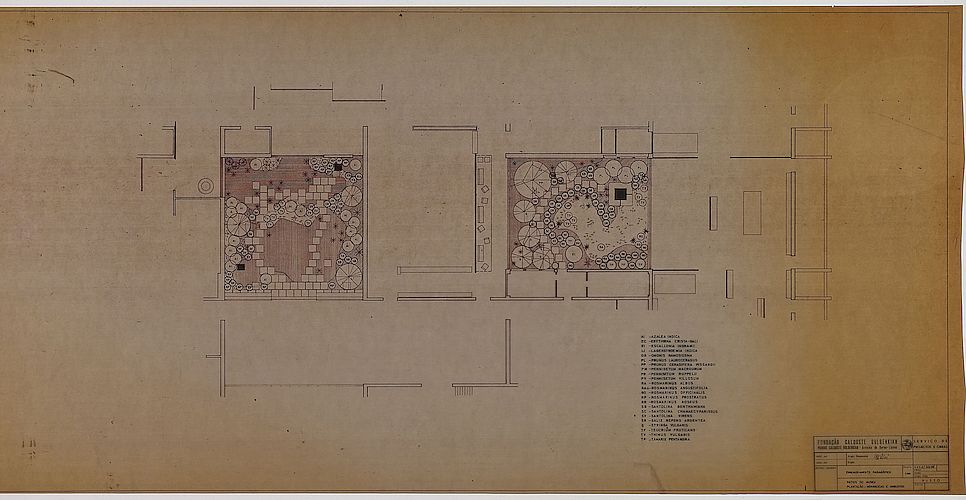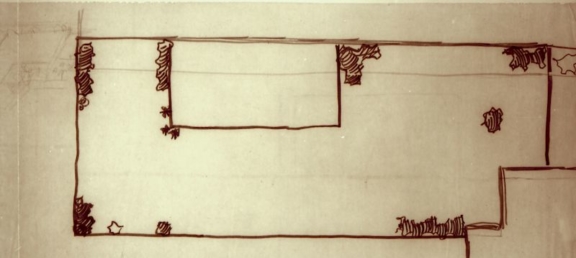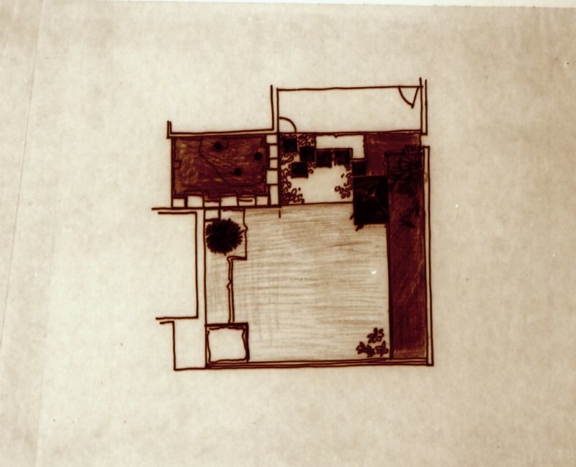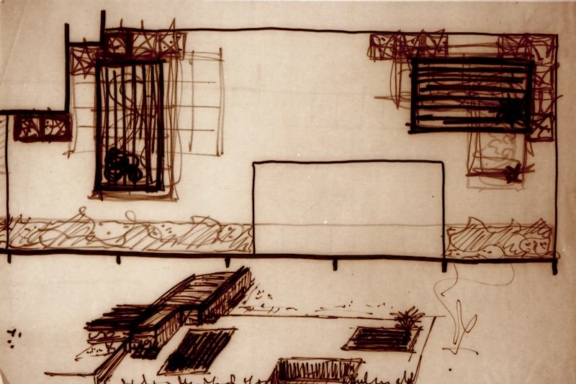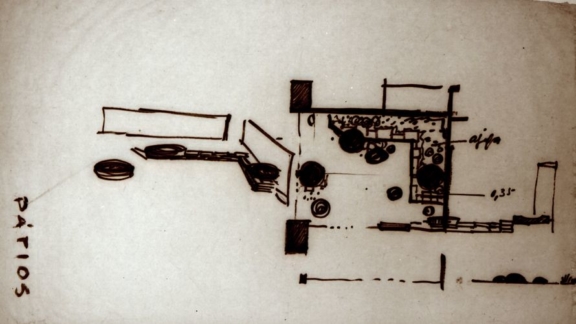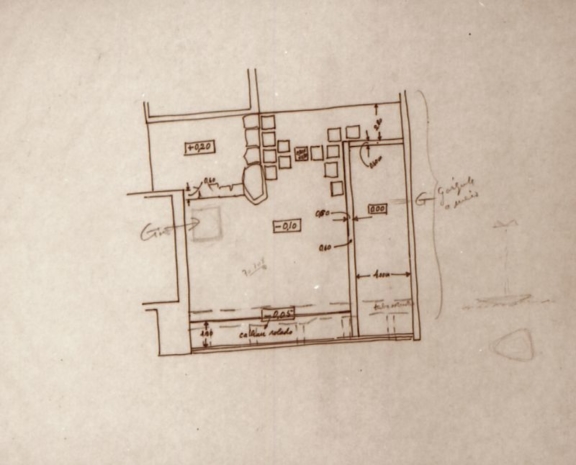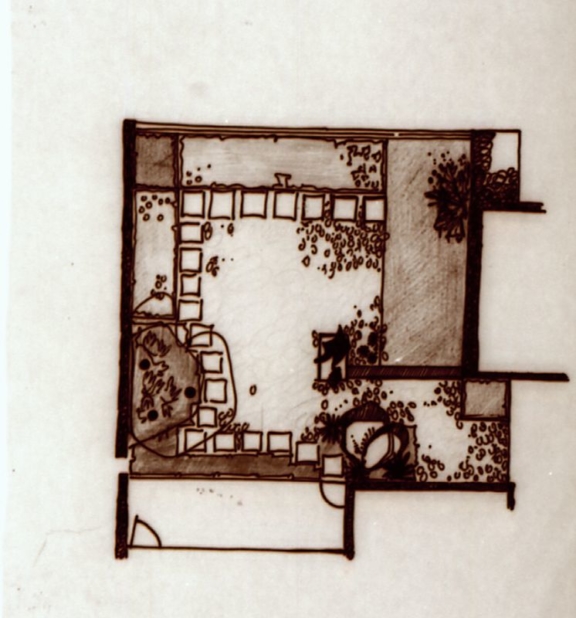
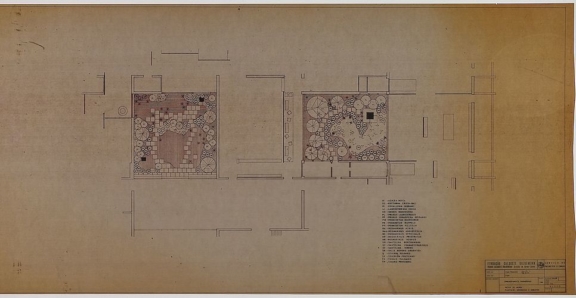
Museum Courtyards – Planting – Herbaceous Plants and Shrubs
Throughout the entire process of developing the Calouste Gulbenkian Foundation’s park, up until 1969, there were two important moments in the design of the museum’s courtyards, one in 1963 and the other in 1966.
Later, in 1976, a project for the recovery of the museum and Congress courtyards took place.
This document is part of a set of technical specification documents [i], developed in 1966 by the landscape architects, referring to the proposed design for the museum’s courtyards, which were completely concluded at the end of the year.
Since the first studies were developed in 1963, an evolution can be noted in the proposed design. The initial proposal evolved into a more organic abstract design defined mainly by inert materials and vegetation.
An analysis of the proposed vegetation reveals that it was chosen to create notes of seasonal colour, given by the flowering and colour of the foliage (mainly of small trees and shrubs), on a base in which the greens and light-greens of some chosen species predominate.
[i] Museum Courtyards – Irrigation
Museum Courtyards – Plantation – Coating
- Production date: 1966
- Designers (main authors): TELLES, Gonçalo Pereira Ribeiro
- Contributors (co-authors): FCG – Serviço de Projectos e Obras
- Project phase: Do projeto de execução à obra (1963-1969)
- Identifier: PT FCG FCG:SCT-S006-DES01117
- Temporal coverage: 1966
- Type of data: Image
- Extension format: 1 desenho
- Media format: jpg
- Vegetation: Erythrina crista-galli | Cockspur Coral Tree, Escallonia rubra ‘Ingramii’ | Red Escallonia, Escallonia rubra ‘Ingramii’ | Red Escallonia, Lagerstroemia indica | Crape Myrtle, Ononis ramosissima | Yellow Restharrow, Pennisetum macrourum | African feather grass, Pennisetum ruppelii | Fountain Grass, Pennisetum villosum | Feathertop, Prunus cerasifera ‘Pissardii’ Cherry Plum, Prunus laurocerasus | Cherry Laurel, Rhododendron indicum | Azalea, Rosmarinus angustifolius | Pine Scented Rosemary, Rosmarinus officinalis ‘Albus’ | White Rosemary, Rosmarinus officinalis ‘Albus’ | White Rosemary, Rosmarinus officinalis ‘Prostratus’ | Rosemary Prostratus, Rosmarinus officinalis ‘Roseus’ | Pink Rosemary, Rosmarinus officinalis ‘Roseus’ | Rosemary Roseus, Rosmarinus officinalis | Rosemary, Salix repens ‘Argentea’ | Creeping Willow, Santolina benthamiana | Lavender Cotton, Santolina chamaecyparissus | Cotton Lavender, Santolina virens | Green Santolina, Syringa vulgaris | Common Lilac, Tamarix chinensis | Five-stamen Tamarisk, Teucrium fruticans | Shrubby Germander, Thymus vulgaris | Common Thyme
- Keywords: bed, courtyard, ecological value, exotic, flora, herbaceous, limit, native vegetation, phytoclimatic association, planting system, shrub, system, technical design, tree cover
In order to consult the original version of this document you should contact the Gulbenkian Archives by e-mail [email protected] and refer the document´s ID
